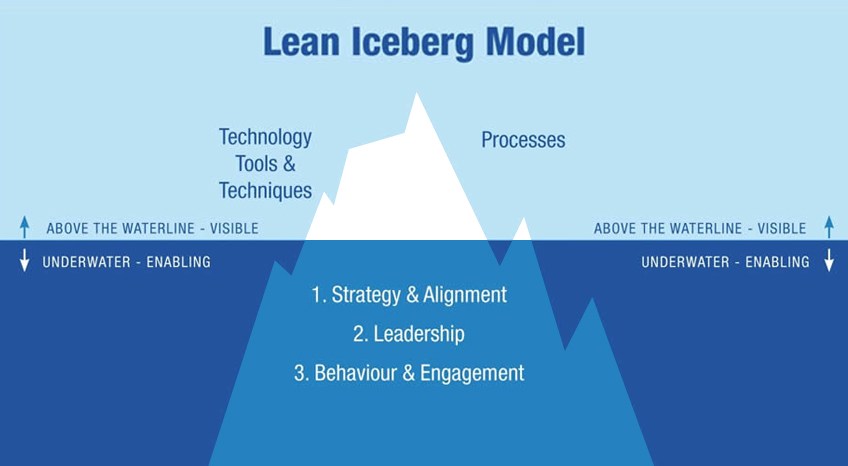Numerous organisations have attempted Lean implementation without creating an underlying Lean mind, resulting in failure. Lean needs to be viewed as a journey and there is a need to align the way people think and behave as Lean must be considered as a mind-set that governs how one looks at the business or processes. Early implementations of Lean in Western cultures were entirely tool-focused and didn’t pay enough attention to the human aspects of the high-performance work system that was at the core of the Lean manufacturing approach. Lean implementation and sustainability is not so much about the tools and processes that are easily visible; rather it is the people-related issues that are below the waterline in the Lean Iceberg Model (Hines et al. 2008).

To establish a sustainable Lean organisation each of the five elements on the Iceberg Model must be addressed:
- Strategy and Alignment
- Leadership
- Behaviour and Engagement
- Process Management
- Technology, Tools, and Techniques
The three “underwater-enabling” elements are all about the people; Lean organisations need Lean people who are both competent and capable of pushing their teams out of their comfort zone on the Lean journey